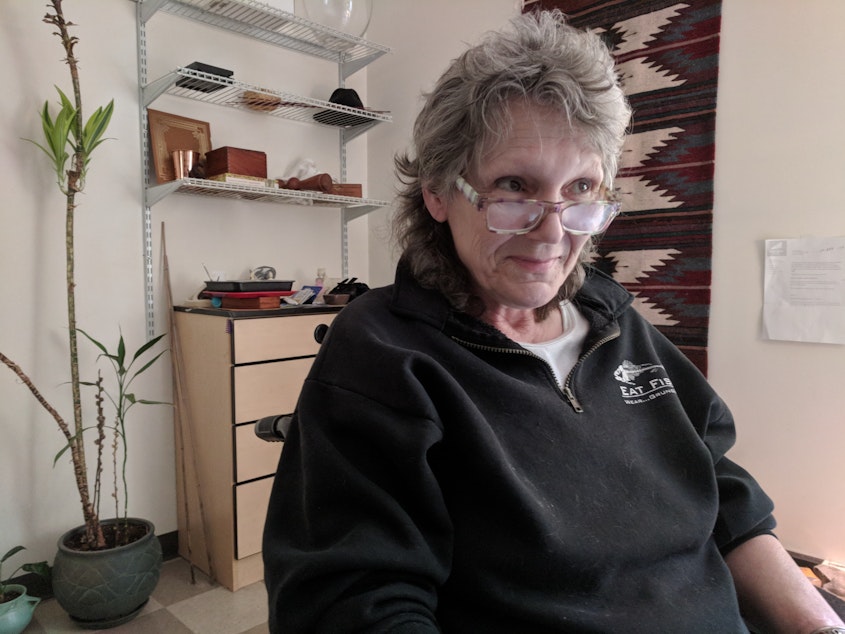As people age, homeless service providers face new challenge

Colleen Lytle says she's been homeless her whole life.
“I never had a home," she told KUOW. "I was one of those kids."
Lytle, now in her 60s, said she bounced around among friends, extended family and neighbors growing up in Ohio. She got pregnant young and moved to Seattle after putting her child up for adoption. She struggled with drugs and alcohol, got into recovery, but has had relapses since, she said.
For a long time she lived in her car. And then she got into permanent supportive housing, an effective intervention and housing model that gets many people who are chronically homeless and dealing with significant issues off the street.
Permanent supportive housing has been around for a few decades. But the issue people in Seattle and across the U.S. are now facing is how to continue caring for people as they’re aging in place in this kind of housing.
Under a permanent supportive housing model, people live independently in their own apartments and on their own leases. They pay rent based on their income and they have access to intensive supportive services on site in their buildings.
The city of Seattle helps fund nearly 2,000 apartments like this. And city data shows they have a 97 percent success rate of keeping people housed.
Sponsored
But these facilities weren’t necessarily set up to cater to seniors who may face mental and physical deterioration as they age.
“People go through a lot of hell when they’re living on the streets,” said Daniel Malone, executive director of the Downtown Emergency Services Center (DESC), a permanent supportive housing provider in Seattle.
Malone said all that takes a toll, meaning that people who have been homeless for long periods tend to age faster.
“So we’re seeing things that one expects to see when people are in their last 10 years of life, a lot of medical complications and so forth,” he said.
Malone said the average age of clients in their housing is nearing the mid-50s . In the past five to 10 years, DESC has seen an increase in the number of medical issues in their clients, on top of the substance abuse and mental health issues clients may have had at the beginning.
Sponsored
Seniors who need more medical care as they age often move to assisted living or nursing homes, Malone said. But because of his clients' histories and financial status, that's often not an option.
Some providers are getting creative. Malone said DESC has started bringing in additional services at some of their locations.
They’ve tried things like finding care-givers who can help with things like cleaning up apartments or bathing, depending on needs.
Over the past decade, more and more permanent supportive housing buildings in Seattle and King County have also added nursing and medical staff.
Heather Barr is with Neighborcare Health, a group that partners with 14 permanent supportive housing buildings.
Sponsored
She said people aging in place is one of the biggest issues their nurses face.
Barr said their staff make a huge difference to residents. They can clean wounds, connect people with ongoing primary care, be on the lookout for signs residents might be struggling and provide end of life counseling.
But there are limitations. They’re not able to provide a level of care similar to assisted living.
“We have one nurse and there might be a hundred people in a building. And certainly she’s not going to be able to do one-on-one care, bedside care, with each person,” Barr said.
As the city and providers look for solutions, Barr said more nurses are needed and more attention needs to be paid to the physical buildings.
Sponsored
Providers are starting to adapt. Some newer buildings are being designed with things like wheelchair capacity, grab bars, intercoms for easy communication and automatic shut-offs for stoves.
But in the long-run, city officials and providers say a pipeline needs to be built to provide a workforce capable of caring for this population as they age. And partnerships need to be formed to ensure the funding exists to continue adapting to the needs of those who are growing old in this kind of housing.
Lytle already lives in a building intended for seniors. Someday, she dreams of having her own home and leaving a legacy behind. But for now, like many others, she continues to age in permanent supportive housing.




